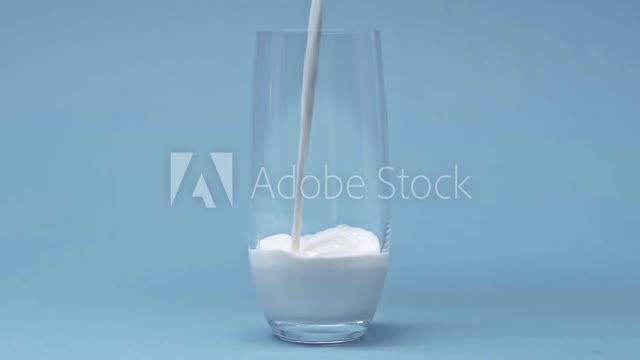Premium Only Content

Health benefits and risks of consuming milk
http://gestyy.com/edz6T6
First Published Jul 13, 2022, 2:29 PM IST
பால் பிரியர்களா..? நீங்கள் அப்படி என்றால் இந்த உணவுகளை பால் குடிப்பதற்கு முன்பு கட்டாயம் தவிர்த்து விடுங்கள்.
Milk
உலகம் முழுவதும் சத்தான ஆகாரங்களில் ஒன்றாகபால் எப்போதும் இருக்கிறது. குழந்தைகள் முதல் முதியவர்கள் வரை பால் குடிப்பதால் உடலுக்கு ஏகப்பட்ட நன்மைகள் கிடைக்கின்றன. உடலுக்குத் அத்தியாவசியத் தேவையான கால்சியம் சத்து பால் மற்றும் பால் பொருட்களில் அதிகம் இருக்கிறது. ஆனால்
அத்தகைய பால் குடிப்பதற்கு முன்னர் எந்தெந்த உணவுகளை சாப்பிடக்கூடாது எனபதை இந்த பதிவின் மூலம் தெரிந்து வைத்து கொள்வோம்.
Milk
இறைச்சி:
மீன் போன்ற இறைச்சியில் அதிக புரோட்டீன் இருப்பது நம் அனைவரும் அறிந்த ஒன்றாகும். எனவே, பாலையும் இறைச்சியுடன் சேர்த்து சாப்பிட்டால் பல வேதி வினைகள் செரிமானம் பாதிக்கும். அதுமட்டுமின்றி, வயிற்றுவலி, சருமத்தில் வெண் புள்ளிகள் ஏற்படவும் செய்யும். எனவே இது செரிமான மண்டலத்தில் அழுத்தத்தை தந்து ஜீரண கோளாறுகளை ஏற்படுத்தும். அத்துடன் உடல் உபாதைகளை தரும்.
Milk
எலுமிச்சை போன்ற பழங்கள்:
புளிப்பு தன்மை அதிகம் கொண்ட ஆரஞ்சு, எலுமிச்சை, அன்னாசி, சாத்துக்குடி போன்ற சிட்ரஸ் பழங்களை பால் குடிப்பதற்கு முன்பு தவிர்த்துவிட வேண்டும். அவ்வாறு குடிக்கும் போது, குடலில் அலர்ஜி போன்றவை ஏற்படும். அத்துடன் ஜீரண மண்டலம் பாதிப்படையும். இத்தகைய பழங்களை சாப்பிட்ட உடனே பால் குடித்தால் பாலில் இருக்கும் கால்சியம் பழத்தின் என்சைம்களை உறிஞ்சிவிடும். மேலும் பாலில் இருக்கும் ஊட்டச்சத்துக்களும் உடலில் சேராது. எனவே, மேற்கூறிய பழங்கள் உட்கொண்டால் குறைந்தபட்சம் இரண்டு மணி நேரம் கழித்துதான் பால் பருக வேண்டும்.
Milk
உளுத்தம் பருப்பு:
பால் பொருட்களை உளுத்தம் பருப்பு கலந்த உணவு பொருட்களுடன் சேர்த்து சாப்பிட கூடாது. இல்லையெனில், அது செரிமானத்தை பாதிக்கும். பாலையும், உளுத்தம் பருப்பு உணவுகளையும் ஒன்றாக உட்கொள்வது நம்முடைய உடலுக்கு அவ்வளவு நல்லது அல்ல. அதனால் வயிற்று வலி, வாந்தி உருவாகும். உடல் பருமன் போன்ற பிரச்சனைகள் ஏற்படும்.
Health benefits and risks of consuming milk
https://www.medicalnewstoday.com/articles/296564#_noHeaderPrefixedContent
Types of milk and milk products
Nutrition
Health benefits
Risks
Summary
We include products we think are useful for our readers. If you buy through links on this page, we may earn a small commission. Here’s our process.
Milk is a good source of many essential nutrients, including calcium, protein, and vitamin D. Many people see it as a vital part of a balanced diet. Others, however, cite various reasons for choosing not to consume it.
Sources of milk and milk products include cows, sheep, camels, goats, and many others. Milk alternatives include soy milk, almond milk, flax milk, coconut milk, and hemp milk.
This article will focus on the benefits and risks of drinking cow’s milk.
Types of milk and milk products
There are many different types of milk, all with varying levels of healthfulness.
Milk’s healthfulness depends on the individual and the type of milk they consume.
Pasteurized milk that is high in protein, low in fat, and free from unnecessary additives can be healthful for many people.
On the other hand, some flavoured milk contains as much sugar as a can of soda. These are not healthful choices.
Present-day cow’s milk is not a single product. It can be a fresh or long life, fat-free, lactose-free, fortified with added omega-3s, hormone-free, organic, or raw, among other options.
Nutrition
The nutritional breakdown of milk depends on the fat content and whether or not the manufacturer has enriched it. Nowadays, many manufacturers in the United States fortify their milk products with extra vitamins.
One 244 gram (g) cup of whole milk with 3.5% to 3.8% fat contains
Trusted Source
:
149 calories
7.9 g of fat
7.7 g of protein
12.3 g of sugars
276 milligrams (mg) of calcium
205 mg of phosphorus
322 mg of potassium
3.2 micrograms (mcg) of vitamin D
Meanwhile, one 244 g cup of nonfat or skim milk contains
About Us https://bit.ly/3GUPFOa +919942258153 kvk.subadhra@gmail.com
Thank You Very Much for Sharing YourValuable Thoughts
https://9364dj06vf70ox45wiu30c7c11.hop.clickbank.net
-
 1:14
1:14
Evade and Survive
2 years ago10 Health Benefits of Cauliflower
28 -
 1:43:18
1:43:18
Glenn Greenwald
5 hours agoGlenn Takes Your Questions on the Trump Admin's War with Harvard, Fallout from Wednesday's DC Killing, and More; Plus: Lee Fang on Epstein's Dark Legacy in the USVI | SYSTEM UPDATE #460
78.5K27 -
 LIVE
LIVE
megimu32
1 hour agoTGI...FORTNITE?!? Friday Night Chill!
108 watching -
 7:07
7:07
Colion Noir
3 hours agoBill Removes Suppressors Off NFA Passes House | One Big Beautiful Bill
8.15K8 -
 LIVE
LIVE
TheSaltyCracker
2 hours agoLefties Are Killing Jews ReeEEEStream 05-23-25
15,825 watching -
 LIVE
LIVE
SynthTrax & DJ Cheezus Livestreams
10 hours agoFriday Night DJ MIX Livestream 80s Night SPECIAL EDITION with Variety Visuals
179 watching -
 LIVE
LIVE
OhHiMark1776
4 hours ago🟢05-23-25 ||||| Halo Multiplayer Rumble: No. 14 ||||| Halo MCC (2019)
52 watching -
 LIVE
LIVE
Sm0k3m
7 hours agoHell Diver 2
88 watching -
 LIVE
LIVE
TheSchleppy
5 hours ago $0.02 earned✨TheSchleppy✨HALO RUMBLE EVENT 6PM EST
23 watching -
 29:39
29:39
Afshin Rattansi's Going Underground
14 hours agoHOPELESS: Peter Schiff SLAMS US Involvement in Ukraine, Zelensky’s Corruption & Threat to the Dollar
6.54K